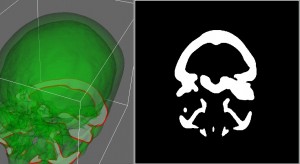DLP vs SLA:
There are two main types of stereolithography: SLA and DLP.
- SLA uses a laser moved along the x and y axis to cure the resin.
- DLP (Digital Light Processing) uses a projector which flashes images of each layer onto the resin to cure it.
DLP is often more expensive than SLA owing to the fact that DLP projectors cost a lot in comparison to the printer.
One problem with the use of stereolithography technology is that the resin is very expensive. It generally costs about 4 times as much per kilogram than FFF (Fused Filament Fabrication) filament (which costs around £30-£40 per kilogram).
DLP often offers better quality prints than SLA. It is able to achieve a resolution of 50 microns to 100 microns. SLA has a typical laser spot diameter of 250 microns to 300 microns (the larger the spot diameter the lower the x-y resolution) and is unable to print in a good a resolution as a DLP printer.
DLP printers are also generally much faster than SLA printers. This is because SLA printers have to pass the laser over the whole model area a spot at a time, for each layer. DLP printers only need to shine the image of the layer that is printing onto the resin for a few seconds before it cures that layer.
One advantage of a DLP printer is that it takes the same amount of time to print one object as it does to print a whole print bed (or vat) of objects. The printer works by shining an image of the layer onto the resin with Ultra Violet (UV) light. The resin in the vat that you do not want to cure is exposed to no UV light. By printing a whole tray of objects you will be shining more UV light onto the print surface, which will take the same amount of time cure as if 1cm2 of the print bed were exposed to UV light.

